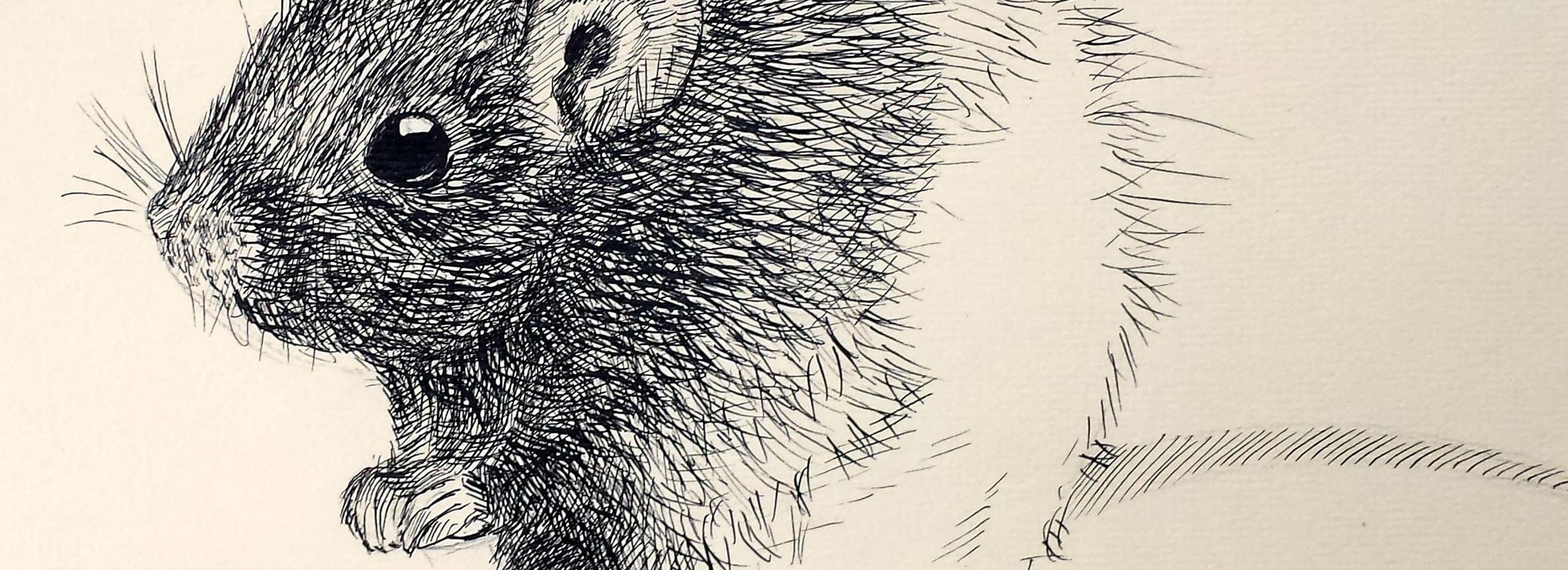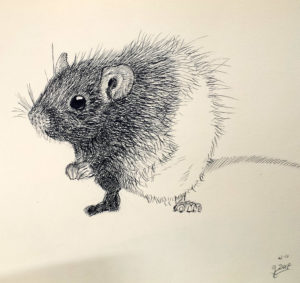Drawing with a dip pen
For ages I have had a hate / love relationship with fineliner pens. I love how permanently such a pen sets its lines. It provides a different mind-set than working with pencil. Just like getting a tattoo, you can still cover up a mistake with a large surface, but never really erase it. This makes working with a fineliner pen a process without concessions. Especially if you draw without an underlying sketch in pencil, it is fast and relentless. A disadvantage of working with especially the somewhat cheaper fineliner pens is the filling up of larger surfaces. Such a pen is empty quickly or changes its dark black color into a desperate gray. That was the reason that they were not allowed to be used in graphic arts at the Graphic School. We learned to work with the despised “tube pens”. After all, you needed 100% black coverage for repro photography. This Rotting, eh … Rotring’s pens, forced you to work neatly. They were not pleasant pens for free work. They had a tendency to dry quickly, but that wasn’t the only disadvantage. Every ruler that came against the pen head was a chance that your drawing was tainted with a big ink stain. There was a myth that you could scratch these stains from the paper with a scalpel. I have yet to see that happen to this day. Besides that, our rulers had an ink border with free parallax, so that you could draw your final line just a millimeter next to the intended target.
After Graphic School, I quickly switched to other drawing tools such as CD markers, Sharpies, Molotows and other pens that could give off a lot of black. I had forgotten what kind of tools the Romans used around the year 410; the “Dip Pen” or in Dutch “kroontjespen”. It had been there for years: a set of dip pens lying in an old wooden pencil box from primary school. Okay, honestly, it did not completely disappear from my memory that a dip pen gives a good black coverage, but what I was really surprised about was how narrowly accurate this pen can be. Maybe I did not have the right motor skills as a kid (I can still see my elementary teacher turning gray on watching the crushing of another umpteenth pen tip). With Groeten van Marcs assignment “draw something hairy” I got to meet again with this fine tool. This extremely accurate and never failing pen is ideal for drawing hundreds of hairs and shading. It did not turn out as the collage of spots that I expected it to become. Anyway; I am no longer in school and may also have a little more patience than before (maybe I learned something from the Rotrings). At home I opened that old pencil box to free an old hero from oblivion.









share this post